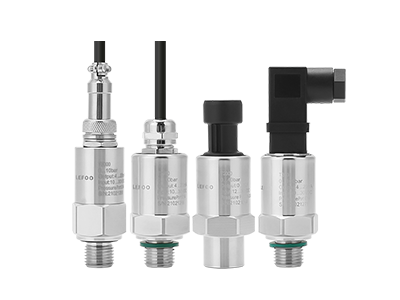The differential pressure sensor is a device that monitors the pressure changes of the medium at two different positions. (For example, the pressure of the raw water before filtering will be higher than that after filtering. When the water pressure at the low pressure side suddenly increases, it usually means that the filter is clogged or damaged ).
For pressure transmitter manufacturers, The positive and negative pressure ends are separated by a stainless steel diaphragm, so both pressure chambers are available to a chemical aggressive fluid, and the measured differential pressure is passed to the silicon wafer through the isolation diaphragm and filled silicone oil, generating a milliampere-level electricity current signal, which is collected by the pressure sensitive sensor and the circuit board followed by a temperature compensation to achieve accurate measurement of the differential pressure.
The pressures that silicon experienced are converted into electric signals, and then the output is processed and modulated by the Wheatstone bridge and electric board. As the basic milliampere signal cannot be transferred to long distance, and the differential air pressure sensor cannot be installed near the equipment with strong electromagnetic interference, which makes its installation very limited.
Differential pressure sensors are versatile in function and the most prominent one is to measure the pressure difference between two measuring points. This pressure difference has many functions. For example, the diffuse silicon differential pressure sensor hvac can observe changes in air pressure in the HVAC system, and the oil-filled silicon pressure difference sensor can observe debris-free and non-adhesive fluids, such as raw water or air media.
The hvac differential pressure sensor is like a converter that level-up the output signal of the sensor into a signal that can be recognized by a remote controller or PLC and computer software (or converts the non-electricity input from the sensor into an electrical signal and amplifies the signal source for remote measurement and control) To achieve signal conversion, several temperature compensation optimizations are required.
The core difference is the accuracy. The accuracy of the differential air pressure sensor is usually 0.25% FS ~ 1% FS, and the accuracy of the differential pressure transmitter is 0.05% FS ~ 0.075% FS. The current production of LEFOO is a type of differential pressure transmitter of 0.075% accuracy rate for more industrial automation projects.
The fundamental difference is that the differential pressure sensor only converts non-electrical physical quantities such as temperature, pressure, air pressure, and hydraulic pressure into primary weak electrical signals. While differential pressure transmitter is an instrument that upgrades and converts primary electrical signals into higher-level standard electrical signals. Different transmission protocols require different transmitters. In other words, the differential pressure transmitter amplifies the weak electrical signal collected by the sensor into a higher level signal for long-distance transfer or digital controlling protocol. In addition, a differential pressure transmitter can also convert the non-electricity input from the sensor into an electrical signal while amplifying it for remote measurement and control and can convert simulated quantity into digital protocol according to customers' needs.
Introduction to the Working Principle and Function of Pressure Transmitter-pressure transmitter working principle
More Related Products

 English
English  français
français  Deutsch
Deutsch  Español
Español  italiano
italiano  русский
русский  português
português  العربية
العربية  Türkçe
Türkçe  Zulu
Zulu 